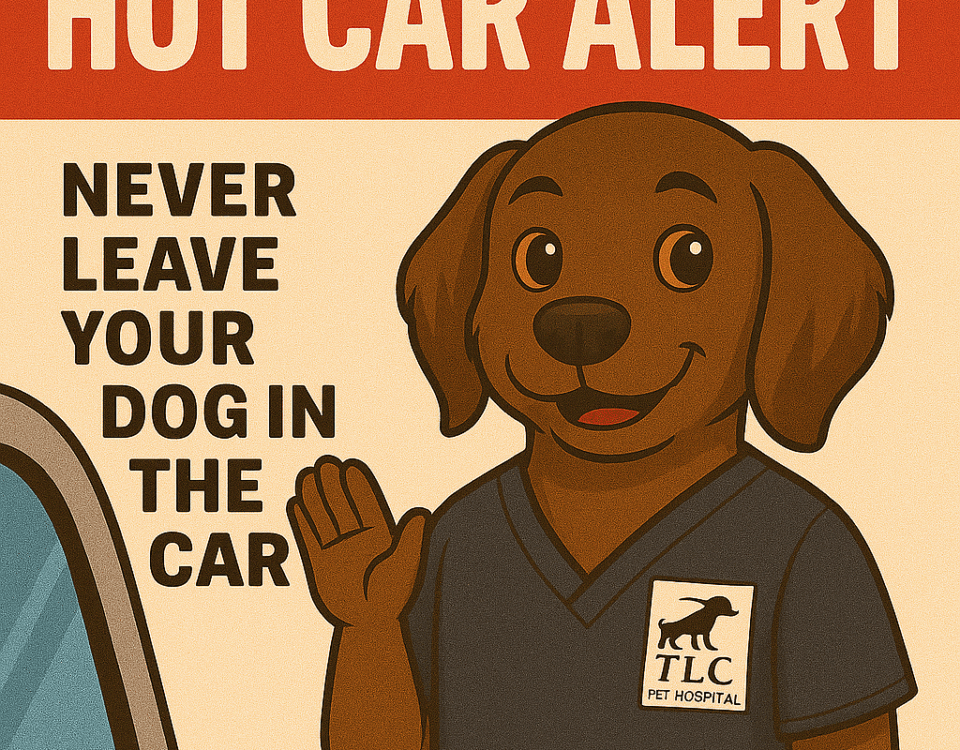
Pet Loss – Children
May 19, 2015Pet Care
May 26, 2015My Pet Is Elderly and Will Soon Pass Away. How Can I Make My Home More Comfortable for Her?
The most important thing you can do for your elderly pet is to minimize any pain or distress she’s experiencing at the end of her life. First, be sure to consult with your veterinarian and treat any health problems, since undiagnosed issues can cause discomfort and rapid deterioration.
Make your pet feel secure by surrounding her with her favorite things, like a warm blanket or special squeaky toy. Since pressure sores can develop in pets with limited mobility, it’s also essential to provide a warm sleeping spot with plenty of cushioning.
Some older pets may develop incontinence, or the loss of bladder control, so be sure to check your furry friend regularly for any wetness or soiling. If your pet needs help getting up to urinate or defecate, you can purchase a sling or use a large towel to wrap under her body and assist her.
What Determines a Good Quality of Life for My Pet?
- Does your pet seem irritable, restless or confused?
- Has he lost his appetite or does he drink water excessively?
- Does he avoid his favorite activities?
- Is your pet picked on by other animals in the home? This can happen when a sick or elderly dog becomes the weakest member of the “pack.”
- Does he seek out unusual places to sleep or hide?
When your pet’s quality of life deteriorates due to an untreatable disease or aging, please speak with your veterinarian and family members about end-of-life issues.
How Can I Tell if My Pet Is in Pain?
When cats and dogs are suffering, they may not show outward signs that we normally associate with pain like whimpering or crying. Sometimes an animal will continue to eat or drink in spite of pain, panting or disorientation. Some physiological and behavioral signs that your pet might be experiencing pain include:
- excessive panting or gasping for breath
- reclusiveness
- reluctance to move
- food pickiness
If you’re unsure of how much your pet is suffering, keep a daily record of good days and bad days. It’s also important to ask your veterinarian for the exact signs of suffering likely to be associated with your pet’s condition or disease.
Are There Any Behavioral Changes I Might See in My Sick Pet or Other Pets in the Household?
Irregular behavior patterns are often the first sign that your pet is ill or in pain. A pet may lose his normal activity levels, appetite and grooming tendencies, or he may exhibit inappropriate elimination, vocalization and aggression.
Other healthy pets in the household may experience similar abnormal behaviors as a reaction to the changes and distress of your sick animal companion. Be sure to get regular check-ups for all of your pets to monitor and protect against any undiagnosed issues.
What Are Some At-Home Pain Management Options for My Elderly Pet?
If you suspect your pet is in pain, please make an appointment with a veterinarian for a physical examination and consultation. Your veterinarian will explain the pain management protocol associated with your pet’s specific condition. For pain due to arthritis, for example, a non-steroidal anti-inflammatory drug may be prescribed, but only after blood tests ensure that your pet does not have kidney or liver problems that would preclude using this type of medication. If your pet has more severe pain, due to a chronic illness like cancer, your veterinarian may prescribe a narcotic pain killer in the form of an oral medicine or a patch that is placed on the skin.
What Is Pet Hospice Care and What Are Its Benefits? What Are the Goals of Pet Hospice Care?
Hospice care—also called palliative care—is an option for pet parents who want to engage in an extended good-bye or are opposed to euthanasia. Pet hospice is an option if your pet is suffering from a terminal illness and a cure is not possible. The focus is to make a pet’s final days or weeks more pleasant with the proper use of pain medications, dietary strategies and human interaction. Pet hospice is not a place, but a personal choice and philosophy based on the principle that death is a part of life and can be dignified. The goal of pet hospice is not to cure your pet’s illness but rather to ensure a peaceful end-of-life experience.
A participating veterinarian will teach pet parents how to provide intensive home care to keep an ill pet as comfortable as possible. Every pet parent should also have a back-up plan, which may include euthanasia, in case the animal’s suffering gets out of control.
Is Hospice Care the Right Course for My Pet?
Although hospice care is a growing area of veterinary medicine, we need to be very careful not to prolong the suffering of pets who are in pain or experiencing poor quality of life. It is very difficult to face losing a pet, but our choices must not be clouded by fear of the grief we will experience.
If you are considering hospice care, ask yourself the following questions:
- Do I have a local veterinarian whose expertise includes the most advanced techniques in pain management, alternative treatments, oxygen and hydration?
- Do I have a veterinarian available 24 hours a day to provide emergency euthanasia if my pet’s suffering gets out of control, such as the sudden onset of seizures?
- Do I have adequate resources to provide constant care for my pet, even when I am out of the house?
- Will hospice home care for my pet seriously disrupt my regular family and work obligations?
What Role Do I Play in My Pet’s Hospice Care?
Hospice care requires an active commitment from pet parents, who work with their veterinary team to make sure their pet’s life ends comfortably. Your pet will require your constant supervision—from assessing his condition to pain management or, if necessary, making the final decision to opt for euthanasia.
If you decide pet hospice care is the right course for you and your pet, you will become your pet’s primary nurse and caregiver, as well as the link between your pet and the veterinary team.
How Is Pet Hospice Different from Human Hospice Care?
Human hospice care is available to people who have accepted the fact that they are terminally ill and want to stop further medical treatment aimed at a cure. Hospice care allows a person to be relieved of pain in a more comfortable and less expensive setting than a hospital.
Human patients and their families who opt for hospice care have a more developed support system than pet parents. When a pet parent chooses hospice care but cannot care for his pet at home, there are few places that will board and nurse the animal. It may also be more difficult to find a local veterinarian who is an expert in pet hospice care.
How Can I Find a Veterinarian Who Practices Hospice Care?
First consult with your primary veterinarian and see if she recommends hospice care for your pet based on his specific needs. She may already practice some form of hospice care or may refer you to another vet who will guide you through a hospice program.
What Do I Need to Know in Order to Provide Home Hospice Care for My Terminally Ill Pet?
Pet parents who opt for home hospice care will be taught how to administer pain medication, change bandages, provide fluid therapy and perform general nursing duties, including keeping their pets comfortable and clean.
One of the most important tasks as caretaker is to observe and report any changes in your pet’s behavior, weight, temperature, eating habits, mobility and overall well-being. If you notice any changes, immediately contact your veterinarian, who will adjust your pet’s medication and treatment accordingly. It’s also important to remember that euthanasia may still be necessary with hospice care. If a peaceful, natural end is unlikely or your pet is in pain, you may decide to end his suffering with euthanasia.
Will My Pet Show Signs that He Is Ready to Pass Away?
To be as aware as possible of your pet’s condition, you should:
- Be able to recognize signs of physical suffering typical of your pet’s age and/or illness. Your veterinarian is the best source of this information.
- Prevent unnecessary suffering in your terminally ill, injured or aged animal by finding ways to assess your pet’s quality of life. With your vet’s help, figure out the signs of a good day compared to a bad day and keep a record of how often the signs of pain appear.
- Be as informed as you can about your pet’s behavior. Being unaware or unable to assess signs and symptoms will exhaust family members and put your pet at risk of lingering longer than is comfortable.
Euthanasia provides a painless, peaceful end for a pet who would otherwise continue to suffer. Your veterinarian has special training to provide your pet with a humane and gentle death. During the procedure, your vet will inject your pet with a sedative followed by a special medication. The animal experiences no awareness of the end of life—the process is akin to undergoing general anesthesia for a surgical procedure and takes about 10 to 20 seconds.
How Do I Know When Is the Right Time to Euthanize My Pet?
Your veterinarian is really the best person to advise you on when the time is right to euthanize—information from medical tests is often more accurate than what a pet owner can observe, and pet owners often delay the moment of euthanasia in anticipation of grief.
Observing and keeping an accurate record of your pet in his daily activities can help you to decide. If you observe that moments of discomfort outweigh his capacity to enjoy life, it is time to euthanize, even if your pet still experiences pleasure in eating or socializing. If your pet is in pain, your main goal should be to minimize his suffering.
Will My Other Pets Grieve a Pet Who Has Passed Away?
After the loss of a companion animal, many people observe a change in their surviving pet’s behavior. Sometimes the pet appears depressed and shows diminished interest in play or food, and it often helps to simply give your surviving pet some extra attention and love. If your animal companion appears upset, check with a veterinarian to make sure there is no underlying medical problem causing his behavior.
It is also well-documented that pets can recognize death in a companion animal. Cats, dogs and horses who see the deceased body of an animal they knew can adjust very well and spend less time searching and grieving than pets who have not seen their companion’s remains.
Where Can I Get Advice or Counseling About the Loss of My Pet?
It is as natural and necessary to grieve for the loss of an animal friend as it is for any loved one who dies. The grieving process often begins before your pet has passed away, so it’s important to take care of yourself and seek help if you need it.
The ASPCA Pet Loss Support program is here to help if your pet has died or if he is ill, injured or elderly. By calling the ASPCA Pet Loss Hotline at (877) 474-3310, you will receive support in the following areas:
- Assistance with the decision to euthanize
- Comfort and support at the time of euthanasia
- Help with grieving the loss
- Advice on dealing with children, the elderly or disabled individuals who are facing a death of a companion animal
- Helping the surviving animals in the household to cope
- Assistance in establishing a relationship with a new pet



